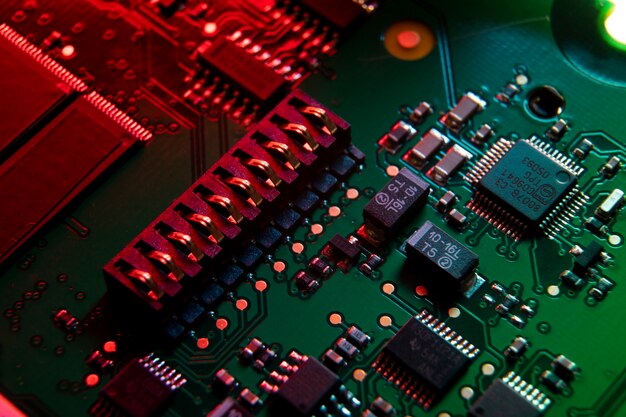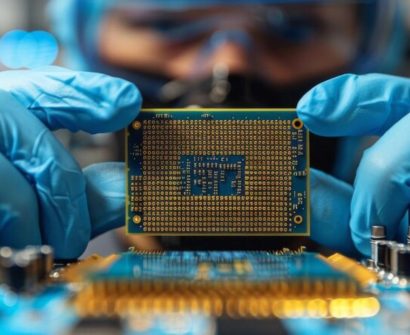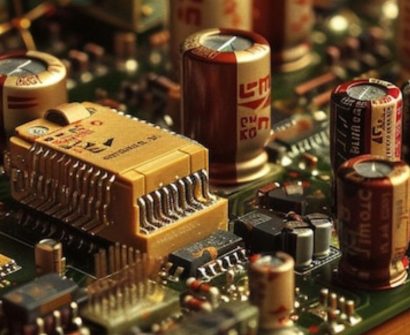Exploring the World of VLSI Design: Shrinking Silicon, Expanding Possibilities

Introduction
Very Large Scale Integration (vLSI) design is a remarkable field that has played a pivotal role in shaping the modern world. It’s the art and science of cramming millions, or even billions, of transistors onto a single microchip, enabling the development of powerful and compact electronic devices that we use in our daily lives. In this blog post, we’ll take a closer look at vLSI design, its significance, and the exciting advancements it has brought to technology.
What is VLSI Design?
VLSI design is a specialized branch of electronics engineering that focuses on creating integrated circuits with a very high transistor count on a single chip. When the transistor count on a chip exceeds 100,000, it’s considered a VLSI circuit. However, with the rapid advancement of technology, the term vLSI design is more commonly used to describe chips with millions or even billions of transistors.
Significance of VLSI Design
Miniaturization: The most prominent achievement is miniaturization. Over the years, chips have become smaller and more powerful. Moore’s Law, formulated by Gordon Moore in 1965, predicted that the number of transistors on a chip would double approximately every two years. This prediction has largely held true, and it has driven the relentless march of technology, enabling the creation of smaller, faster, and more energy-efficient devices.
Performance: VLSI has led to dramatic improvements in the performance of electronic devices. Whether it’s smartphones, laptops, gaming consoles, or servers, the integration of more transistors has resulted in faster data processing, better graphics, and enhanced capabilities.
Energy Efficiency: Smaller transistors consume less power, which has a direct impact on the energy efficiency of electronic devices. This is particularly crucial in mobile devices where longer battery life is a significant selling point.
Cost Reduction: Despite the increasing complexity of VLSI designs, the cost per transistor has continually decreased. This has made advanced technology more accessible to a wider range of consumers and industries.
Key Elements of VLSI Design
Transistor Design: The heart of VLSI lies in transistor design. Engineers work on creating smaller, faster, and more power-efficient transistors, often by shrinking the size of transistors and exploring new materials like FinFETs and nanowires.
Architecture Design: This involves designing the overall structure and organization of the integrated circuit. Decisions made at this stage have a significant impact on the chip’s performance and power consumption.
Physical Design: The physical layout of the transistors and interconnections on the chip is a critical step. This involves placement and routing of components to optimize performance and minimize power consumption.
Testing and Verification: Rigorous testing and verification processes are essential to ensure that the chip functions as intended. This phase helps identify and fix any design flaws or manufacturing defects.
Advancements in VLSI Design
Advanced Manufacturing Technologies: Shrinking transistor sizes to nanometer scales and adopting new materials has been at the forefront of VLSI . Techniques like Extreme Ultraviolet (EUV) lithography have enabled the fabrication of smaller and more powerful chips.
AI and Machine Learning: AI and machine learning are being integrated into design tools to automate and optimize various stages of the design process, making it faster and more efficient.
3D Integration: 3D chip stacking and integration have emerged as a solution to overcome physical limitations and improve performance. This involves stacking multiple layers of chips to increase transistor density.
Quantum Computing: While still in its infancy, quantum computing is an area where vLSI design is pushing the boundaries of what’s possible. Quantum processors are designed using entirely different principles compared to classical chips, and their development is a fascinating frontier in vLSI.
Conclusion
VLSI design has not only transformed the electronics industry but also influenced various aspects of our lives. From the smartphones we use to the supercomputers that drive scientific research, VLSI design continues to be at the forefront of technological innovation. As we look to the future, the field promises even more exciting developments, with advancements in materials, manufacturing techniques, and novel computing paradigms. It’s an exciting time to be a part of the VLSI design community, as it shapes the digital world of tomorrow.
if you’re aspiring to master design verification in the field of VLSI, SuccessBridge stands out as the premier choice for training and education. With their top-notch VLSI training programs, you can gain the knowledge and hands-on experience needed to excel in design verification and make a significant impact in the world of digital design. Don’t miss the opportunity to join SuccessBridge, where your path to success in VLSI design verification begins.






